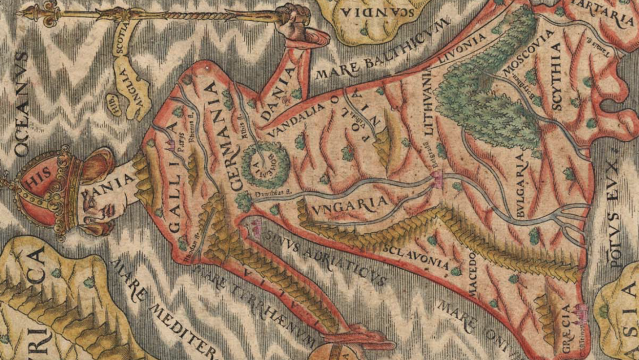142 – Redonda: Once, Twice, Nine Times A Micronation
The Kingdom of Redonda, as presented by King Leo I of Redonda
The Kingdom of Redonda, as presented by King Robert I the Bald of Redonda
On his second transatlantic journey in 1493, Christopher Columbus became the first in a long line of Europeans to lay claim to an island he named Isla Santa Maria la Redonda, Spanish for ‘St Mary’s Round Island’. Today, it is still known as Redonda.
Columbus didn’t land on the island, probably because of its forbiddingly steep slope, the remnant of an extinct volcano’s cone. Redonda’s highest point measures 296 m, pretty tall for an island this small – reports of Redonda’s land area vary from 1.6 to 2.6 km². The island lies about 55 km south-west of Antigua. It is administered as part of the Caribbean nation of Antigua & Barbuda since 1967.
Redonda’s economic relevance to the world reached a high point in the decades after 1860, when its guano deposits were mined for fertiliser, yielding about 7.000 tons annually. This bird-shit-mining period was the only one during which Redonda was inhabited. The population reached its apex in 1901, with about 120 Redondans. The mining operations and the island itself were abandoned during the First World War; Redonda has been uninhabited ever since.
That’s all there is to the official story. Its micronational history starts as Redonda was proclaimed a personal kingdom by a Matthew Dowdy Shiell in 1865. A wholly fanciful claim, which has nonetheless flourished. Currently, there are rumoured to be no less than nine claimants to the Redondan throne.
Shiell was a banker on the nearby island of Montserrat, at present still a British overseas territory. He bought the island when his first son Matthew Phipps Shiell was born. It is reported somewhat unbelievably that the elder Shiell requested and received the title of King of Redonda from Queen Victoria, who granted it on condition that there would be “no revolt against colonial power”.
The younger Shiell (1865-1947) was crowned as Felipe I, the second king of Redonda, on his 15th birthday. He dropped the last –l of his family name when he moved to England in 1885, where he rapidly found a niche for his short or serialised stories in popular magazines. Shiel became a prolific writer of fantasy and sci-fi novels, short stories and serials, and is the reason why the history of Redonda has had a literary twist to it ever since. The villain in Shiel’s serialised novel The Yellow Danger, Dr. Yen How, is said to have helped shape the better-known Fu Manchu. Shiel’s most acclaimed book is The Purple Cloud, a sci-fi novel about a man who returns from a solo polar expedition to find himself the last man alive. Stephen King has said it was one of the inspirations for The Stand.
In 1931, Shiel befriended the young poet John Gawsworth, who became his literary executor and heir to the throne of Redonda. Gawsworth (1912-1970), a.k.a. Terence Ian Fytton Armstrong, a.k.a. Orpheus Scrannel, a.k.a. King Juan I of Redonda, seems to have taken his royal title more seriously than his predecessor – or at least he tried to capitalise on it more. For it seems the semi-permanently bankrupt Gawsworth sold his royal title several times over, which is the main reason why today there are so many different claimants to the Redondan throne.
All this didn’t stop Gawsworth from bestowing the title to his literary executor. This John Wynne-Tyson, an independent publisher, became King Juan II of Redonda in 1970.
Wynne-Tyson abdicated in 1997 in favour of the Spanish novelist and translator Javier Marías Franco (°1951), who became his and Shiel’s literary executor and King Xavier I of Redonda. Marías Franco tells the story of his ‘coronation’ in Negra espalda del tiempo (published as ‘Dark Back of Time’ in English). The current monarch of Redonda also runs a publishing house and has installed a literary prize, both called Reino de Redonda (‘Kingdom of Redonda’).
A website with much information, most of it in Spanish, can be found here. The prize amounts to several thousand euros and a Redondan duchy. Some of the famous artists that have been granted Redondan titles include Pedro Almodovar (Duke of Trémula), Francis Ford Coppola (Duke of Megalopolis) and J.M. Coetzee (Duke of Deshonra).
There are “at least nine” contenders to the Redondan throne, according to Wikipedia. Some of the alternate kings, contesting Xavier I’s claim, include:
Interesting to note are the differences in the maps of Redonda as shown on King Leo’s and King Robert the Bald’s websites.
Robert the Bald’s version = Leo’s version
Named by Robert the Bald, not by Leo
Named by Leo, not by Robert the Bald
Identical namings
Redonda came in the news in mid-2007 when the Wellington Pub in Southampton, England, attempted to declare itself an ‘embassy’ of the uninhabited island in order to gain diplomatic immunity from a nationwide smoking ban on enclosed workplaces, including pubs. The Foreign Office responded that since Redonda is not an official nation, no such exemption can apply.
I had heard of Redonda, but not of this latest story, to which I was alerted by Glenn Rice, who also kindly provided me with the links to some of the Redondan pretenders.







